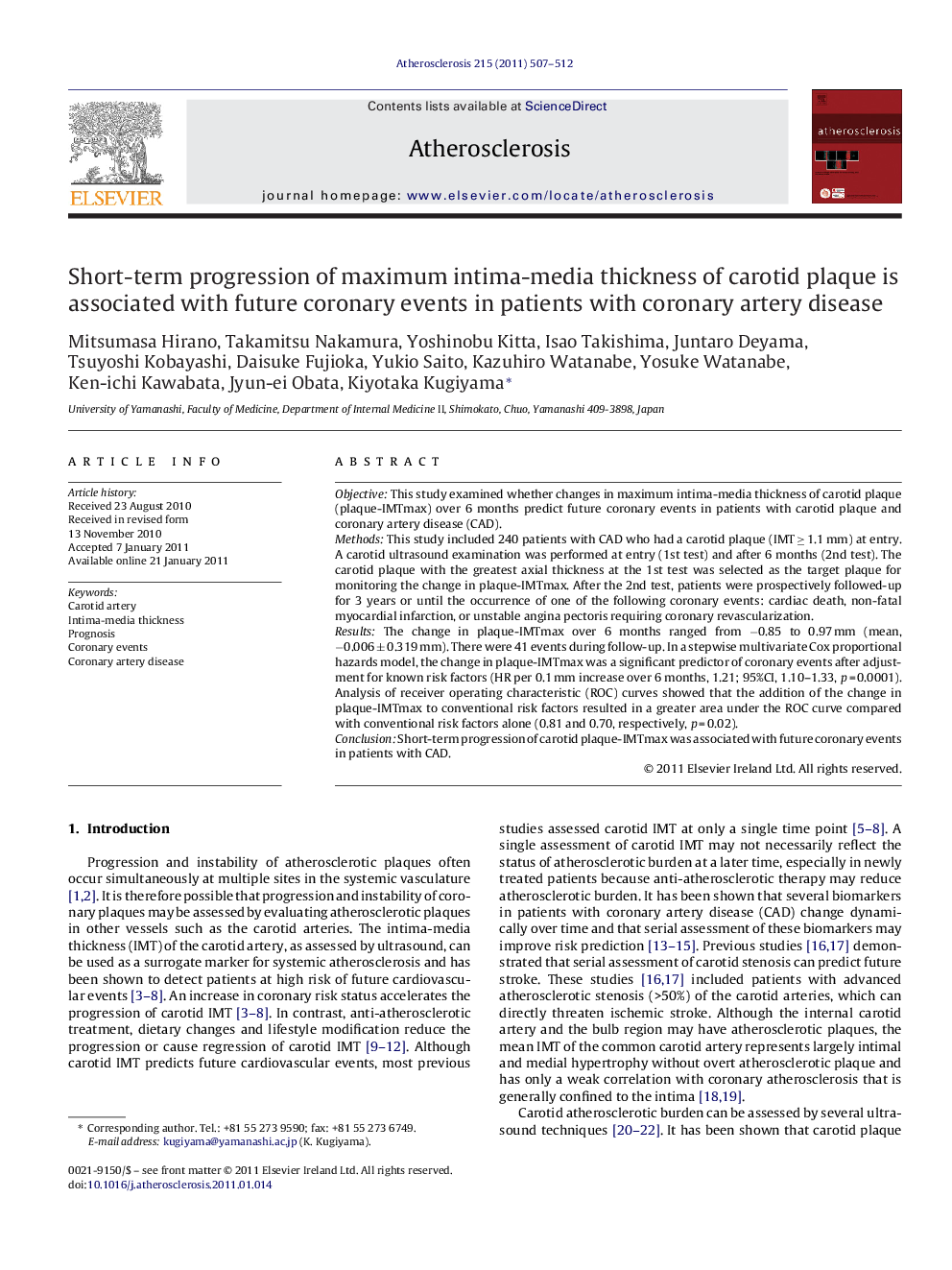| Article ID | Journal | Published Year | Pages | File Type |
|---|---|---|---|---|
| 5950834 | Atherosclerosis | 2011 | 6 Pages |
ObjectiveThis study examined whether changes in maximum intima-media thickness of carotid plaque (plaque-IMTmax) over 6 months predict future coronary events in patients with carotid plaque and coronary artery disease (CAD).MethodsThis study included 240 patients with CAD who had a carotid plaque (IMT â¥Â 1.1 mm) at entry. A carotid ultrasound examination was performed at entry (1st test) and after 6 months (2nd test). The carotid plaque with the greatest axial thickness at the 1st test was selected as the target plaque for monitoring the change in plaque-IMTmax. After the 2nd test, patients were prospectively followed-up for 3 years or until the occurrence of one of the following coronary events: cardiac death, non-fatal myocardial infarction, or unstable angina pectoris requiring coronary revascularization.ResultsThe change in plaque-IMTmax over 6 months ranged from â0.85 to 0.97 mm (mean, â0.006 ± 0.319 mm). There were 41 events during follow-up. In a stepwise multivariate Cox proportional hazards model, the change in plaque-IMTmax was a significant predictor of coronary events after adjustment for known risk factors (HR per 0.1 mm increase over 6 months, 1.21; 95%CI, 1.10-1.33, p = 0.0001). Analysis of receiver operating characteristic (ROC) curves showed that the addition of the change in plaque-IMTmax to conventional risk factors resulted in a greater area under the ROC curve compared with conventional risk factors alone (0.81 and 0.70, respectively, p = 0.02).ConclusionShort-term progression of carotid plaque-IMTmax was associated with future coronary events in patients with CAD.
